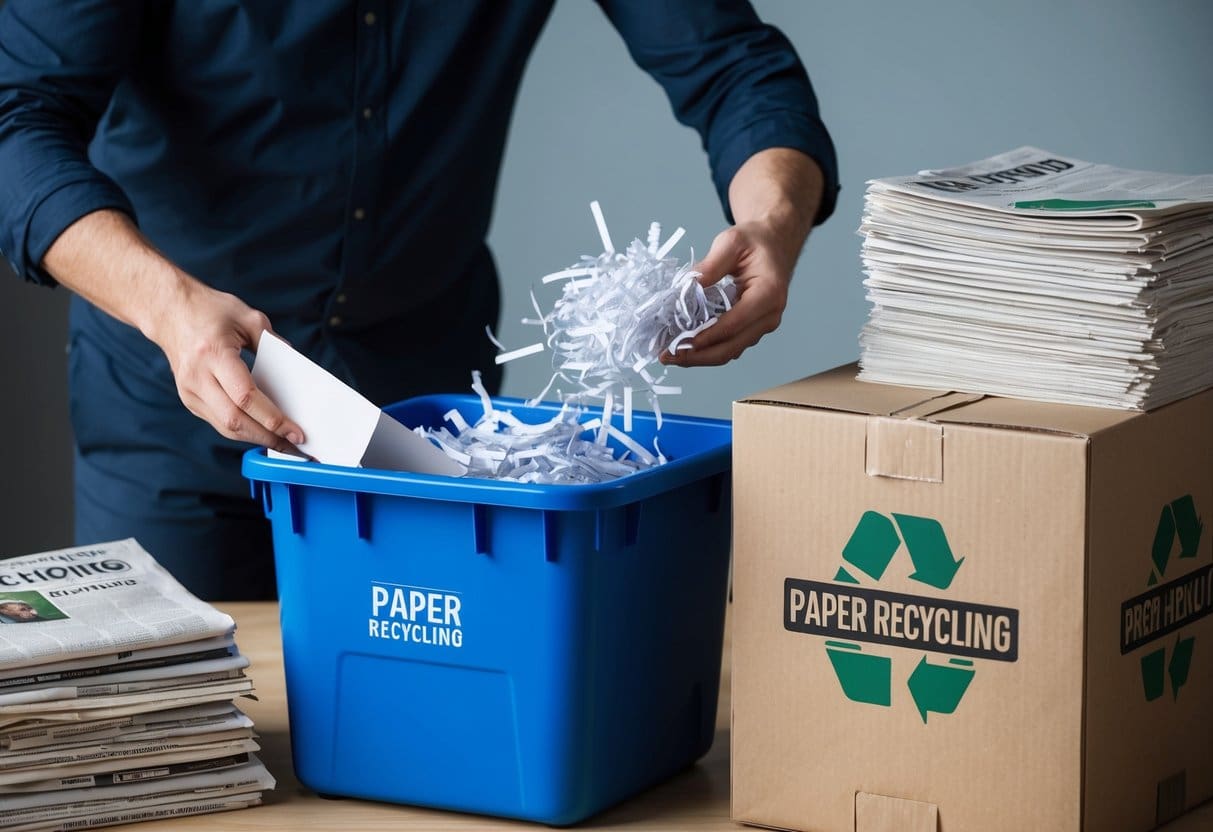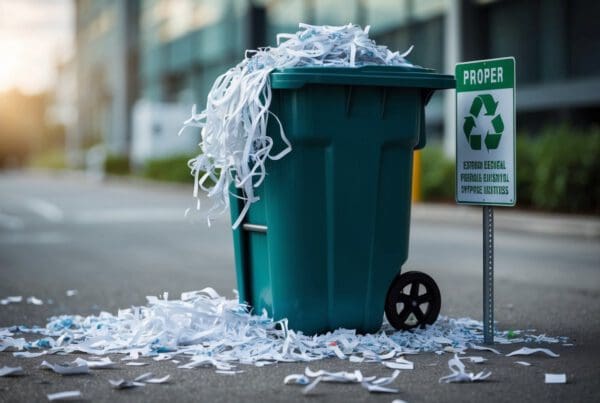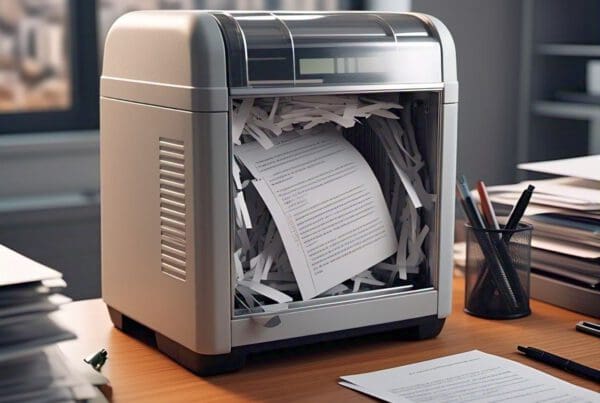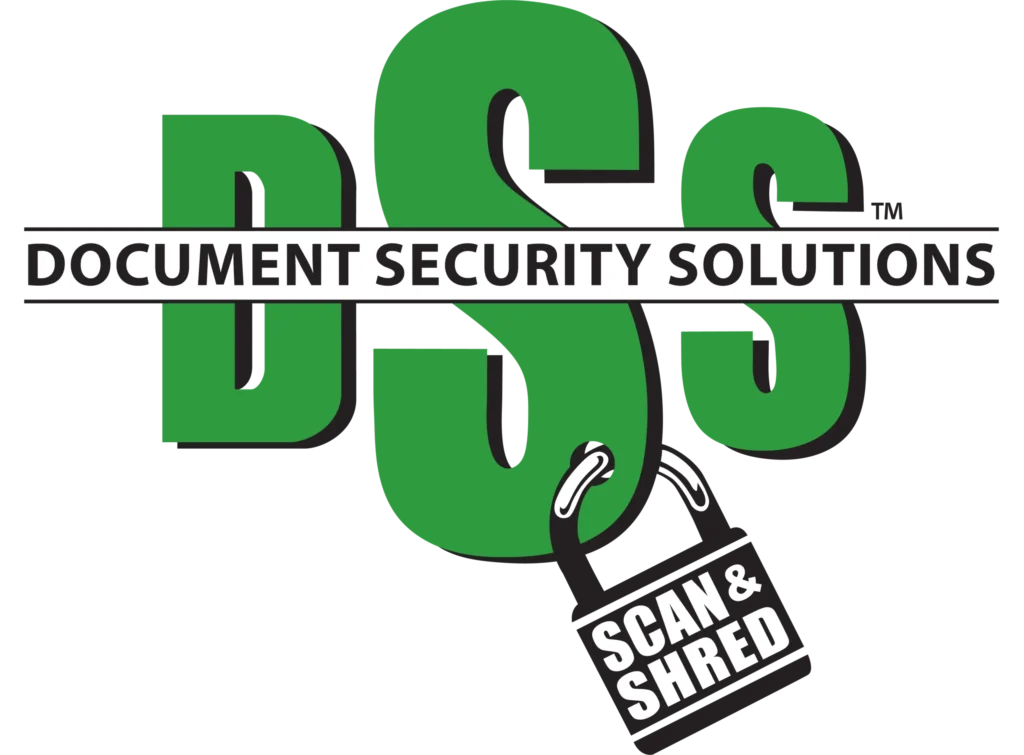Understanding Shredded Paper Recycling

Recycling shredded paper is crucial for environmental conservation and sustainability. It helps reduce landfill waste and conserves natural resources. We explore why it is important and how different facilities and programs handle it.
The Importance of Recycling Shredded Paper
Shredded paper might seem small, but it plays a big role in helping the environment. Recycling this material helps lower landfill waste. This saves space and reduces harmful emissions. By recycling, we also conserve trees and energy.
When we recycle shredded paper, we’re helping protect our planet’s resources. It’s about using what we already have and making sure we don’t waste anything. Every little action counts, and recycling shredded paper is a simple yet powerful step.
Recycling Facilities and Programs
Recycling facilities have different programs for accepting shredded paper. We need to check our local recycling guidelines to see if shredded paper is accepted. Some places have curbside pickup services that make this process easier for us.
These programs often require shredded paper to be bagged or separated. This helps in managing the recycling process effectively. By following these guidelines, we ensure that our shredded paper is handled properly and contributes to sustainable practices.
Preparing Shredded Paper for Disposal

When disposing of shredded paper, it’s important that we consider sorting and contamination concerns, explore useful packing material uses, and protect sensitive information. By paying attention to these aspects, we ensure the safe and responsible handling of paper waste.
Sorting and Contamination Concerns
We must first sort shredded paper to keep it free from non-paper contaminants. Items such as staples, paperclips, and glossy paper can be problematic. They should be removed prior to the shredding process. These materials can interfere with recycling facilities.
A clear space for sorting helps us manage this task efficiently. Knowledge of which papers can be recycled is essential. Glossy paper and paper with plastic coatings are usually not recyclable with regular paper waste. We should separate them.
Proper disposal bins and bags are helpful in keeping shredded paper clean and ready for recycling. Using labeled bins can prevent mistakes during the sorting process. This ensures that we adhere to local recycling guidelines.
Packing Material Uses and Reuse Options
Shredded paper serves as an excellent packing material. Its soft texture cushions items. We can use it to protect fragile items in storage or during shipping. This can reduce the need for bubble wrap or other non-eco-friendly materials.
Besides packing, shredded paper can be reused in locations like the garden. It makes a great addition to compost. Paper breaks down naturally, contributing to a richer compost mix over time.
Creative reuse options, such as crafting projects, can also benefit from shredded paper. It’s important to assess our specific needs and opportunities for reuse before deciding on disposal. This can help reduce our waste footprint and support sustainability efforts.
Shredding Documents with Sensitive Content
When handling sensitive information, document shredding is crucial. Personal and financial information must be destroyed carefully to avoid identity theft. Using a reliable shredder or a professional shredding service can ensure that documents are properly destroyed.
We must verify that shredded documents containing sensitive content are disposed of correctly. Obtaining a certificate of destruction if using professional services can provide assurance of safe handling. These certificates serve as proof that the document destruction process was completed securely.
Keeping a record of all sensitive documents shredded helps track the disposal process. It also allows us to be vigilant about protecting personal and sensitive information from unauthorized access. By maintaining rigorous practices, we ensure safety and confidentiality.
Alternatives and Digital Solutions

There are digital alternatives to shredding paper. By storing documents online, we reduce clutter and make them easier to find. Using cloud storage services like Google Drive or Dropbox can keep our important files safe and organized.
Environmental conservation is important. Instead of shredding, we might choose to store files on a secure server. This helps in reducing waste and protecting forests.
For another option, consider digital document destruction tools. These programs can securely delete files from our computers, ensuring sensitive information is permanently erased without paper waste.
Recycling remains a crucial part of our approach. Let’s use shredded paper in creative ways, like composting or packing materials, to help lessen the impact on the environment.
Choosing to shred documents can also align with safe disposal methods. We just need to ensure that we recycle the shredded material properly afterward to help with sustainability efforts.
Composting Shredded Paper
Composting shredded paper is an effective way to contribute to sustainability and environmental conservation. By adding paper to our compost piles, we can improve soil health and reduce waste.
Incorporating Shredded Paper into Compost Piles
To compost shredded paper, we start by making sure it’s free from plastic and heavy inks. We then add it as a carbon-rich material, which complements the nitrogen materials like fruit scraps and grass clippings.
A simple mix:
- 3 parts shredded paper
- 1 part green waste
We aim for a manageable compost heap size, which helps with aeration and decomposition. This balance boosts microbial activity, breaking down materials effectively.
Best Practices for Composting Paper Waste
It’s vital to keep our compost pile slightly moist, like a damp sponge. If the pile is too dry, the decomposition slows down. We regularly turn the pile to improve airflow.
A compost heap should be well-managed to prevent issues with smell or pests. Paper takes a bit longer to break down, so patience is key. We encourage shredding it into small pieces for faster decomposition.
Utilization for Animal Bedding
Shredded paper is a great option for animal bedding. It helps us reduce landfill waste by reusing materials. Many pet owners find it effective for small animals like guinea pigs, rabbits, or hamsters.
Paper absorbs moisture and controls odors, making it a good choice for pet bedding. It’s also soft and non-toxic. Before using it, we should remove any staples or plastic bits to keep our pets safe.
Using shredded paper for bedding is simple. Just spread a layer in the animal’s enclosure. We might need to change it regularly to keep the space clean.
Here’s a quick list of benefits;
- Eco-friendly: Reuses materials and reduces waste.
- Cost-effective: Saves money compared to buying commercial bedding.
- Soft and comfortable: Keeps our pets cozy and happy.
If we own a larger animal, shredded paper may serve as a temporary solution. It isn’t always as durable as other bedding types, but it can work in a pinch.





